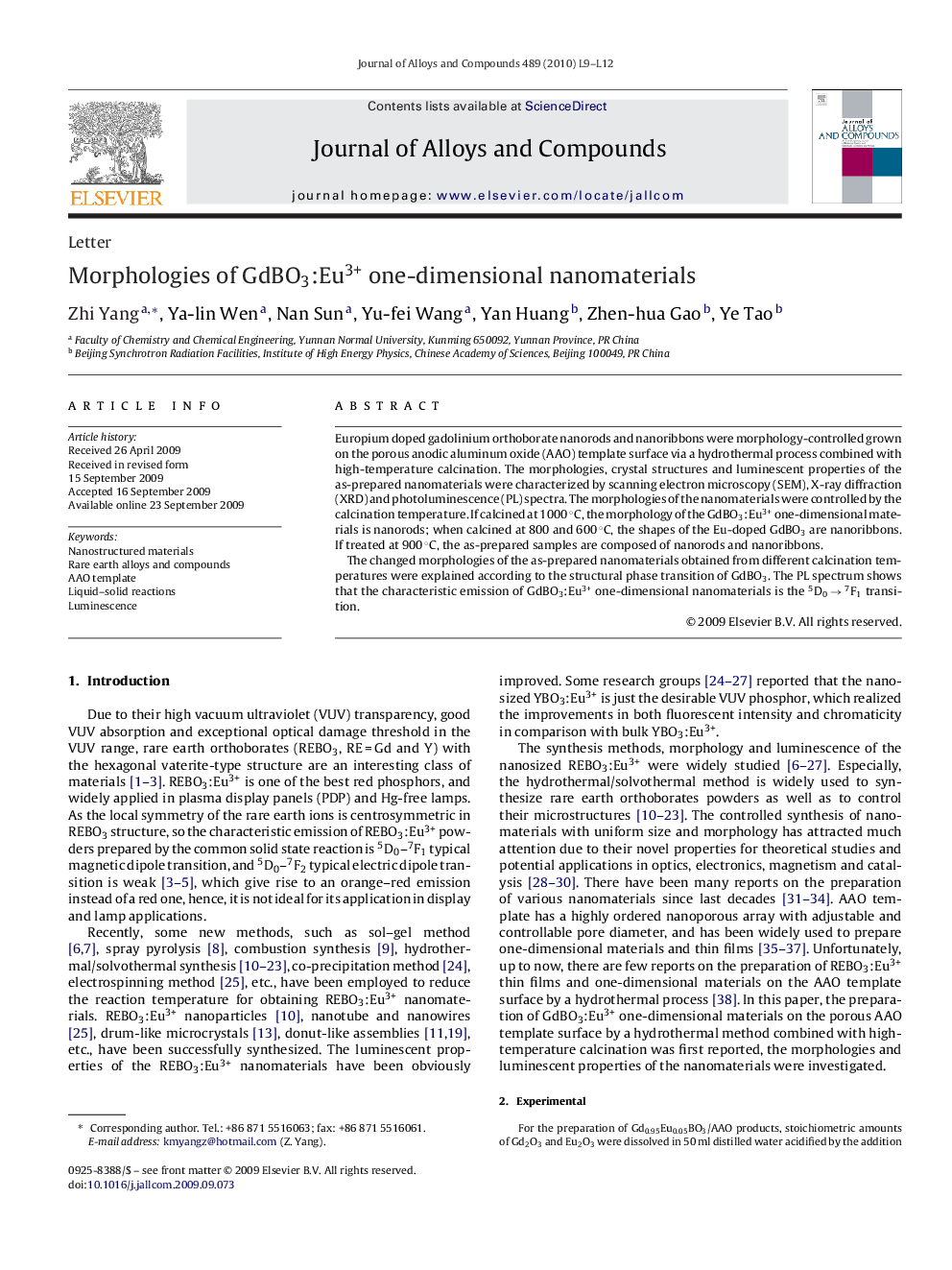| Article ID | Journal | Published Year | Pages | File Type |
|---|---|---|---|---|
| 1621185 | Journal of Alloys and Compounds | 2010 | 4 Pages |
Europium doped gadolinium orthoborate nanorods and nanoribbons were morphology-controlled grown on the porous anodic aluminum oxide (AAO) template surface via a hydrothermal process combined with high-temperature calcination. The morphologies, crystal structures and luminescent properties of the as-prepared nanomaterials were characterized by scanning electron microscopy (SEM), X-ray diffraction (XRD) and photoluminescence (PL) spectra. The morphologies of the nanomaterials were controlled by the calcination temperature. If calcined at 1000 °C, the morphology of the GdBO3:Eu3+ one-dimensional materials is nanorods; when calcined at 800 and 600 °C, the shapes of the Eu-doped GdBO3 are nanoribbons. If treated at 900 °C, the as-prepared samples are composed of nanorods and nanoribbons.The changed morphologies of the as-prepared nanomaterials obtained from different calcination temperatures were explained according to the structural phase transition of GdBO3. The PL spectrum shows that the characteristic emission of GdBO3:Eu3+ one-dimensional nanomaterials is the 5D0 → 7F1 transition.
